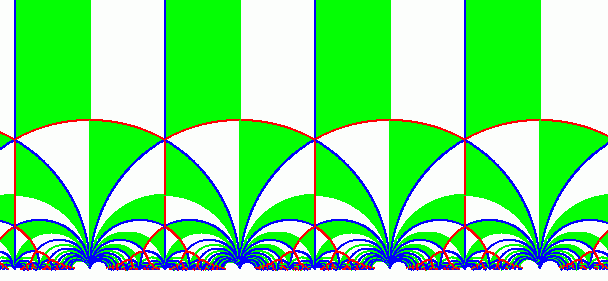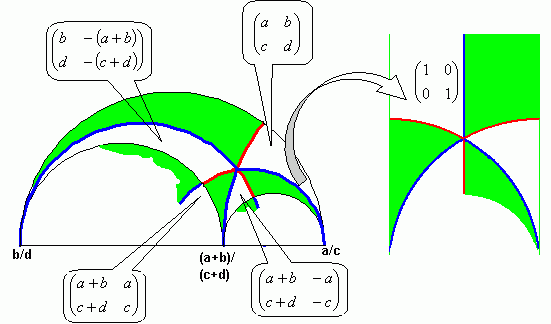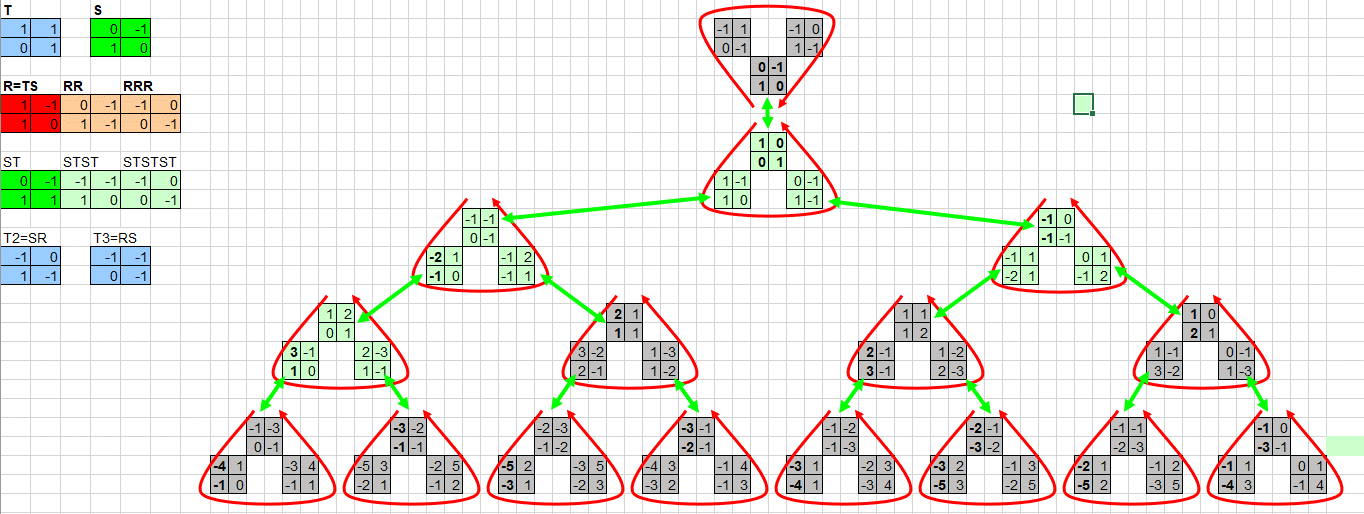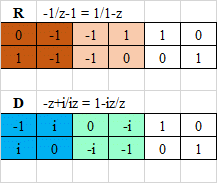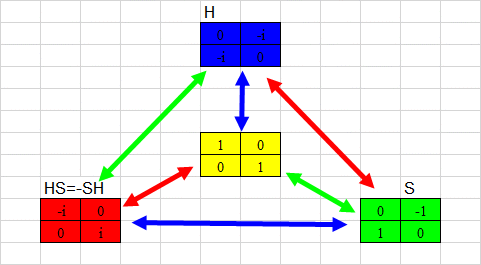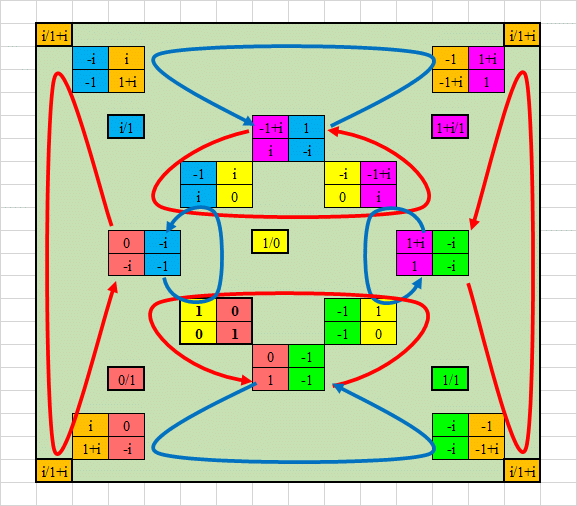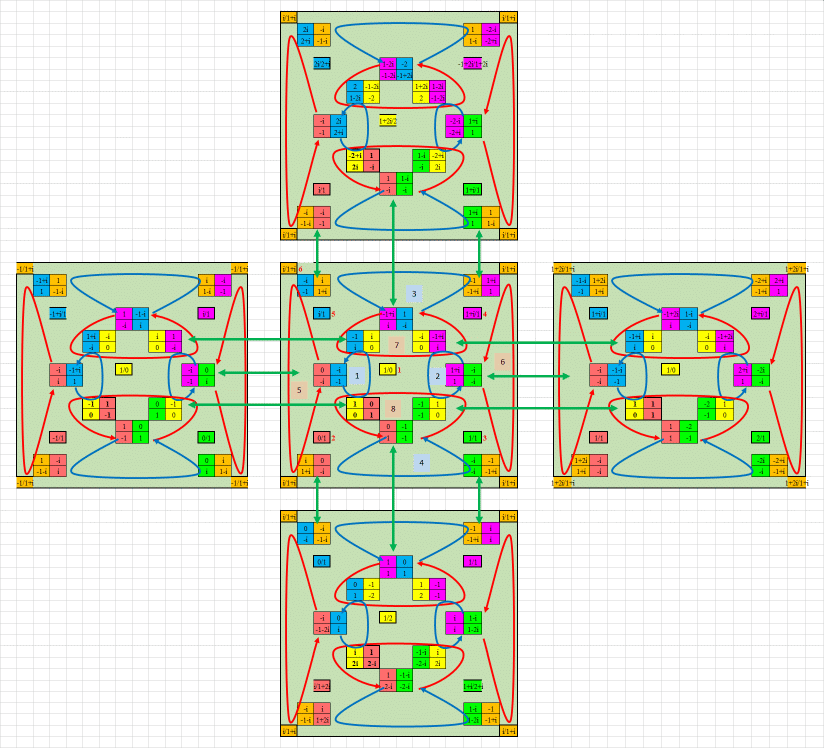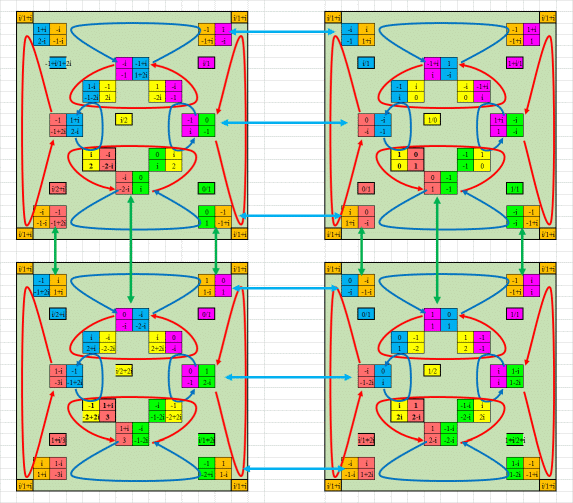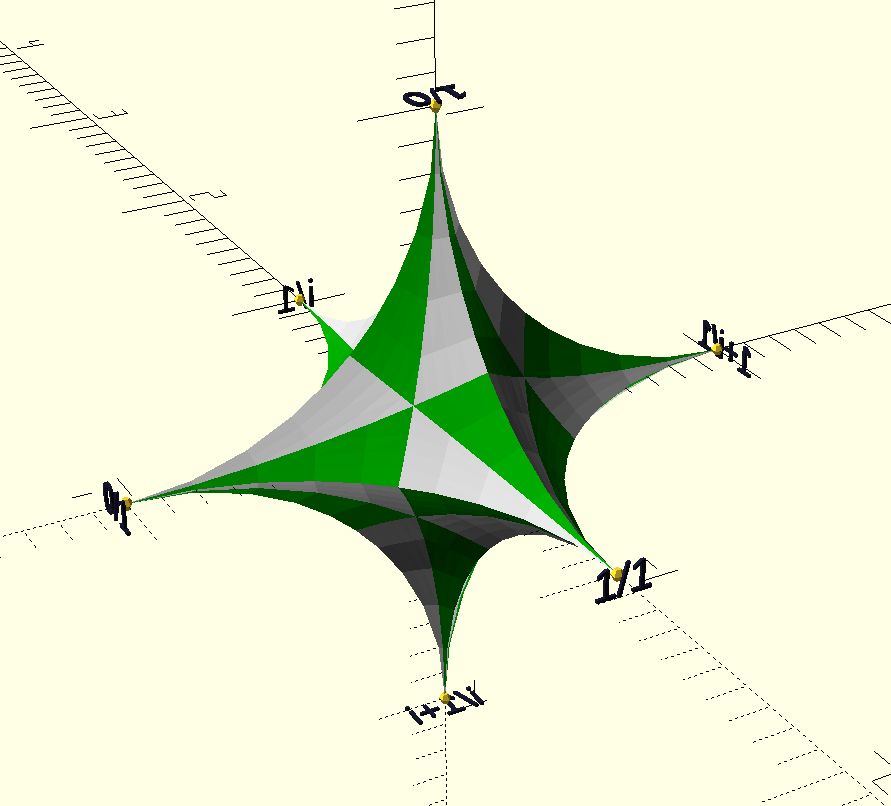This
subgroup can be interpreted as an
octahedron.
The 8 3-cycles
correspond to the 8 faces of the octahedron. The 12 matrices correspond
to the 12 edges of the octahedron. The 6 vertices correspond to 6 Farey
fractions, which are the common columns of 4
matrices which
are in a 4-cycle RDRD.
Next, if we combine the octahedron with the 2 cycle S, we get an
infinite tree of octahedra, joined by "DS-joints":
The combination of R and S gives RSRS=1. So only half the sides of the
octahedron take part in this tree. But there is a second tree, with
"RH-joints". I will not draw it here, it is similar to the "DS-tree".
The 2 trees partially overlap, through 4 cycles SHSH=1.


